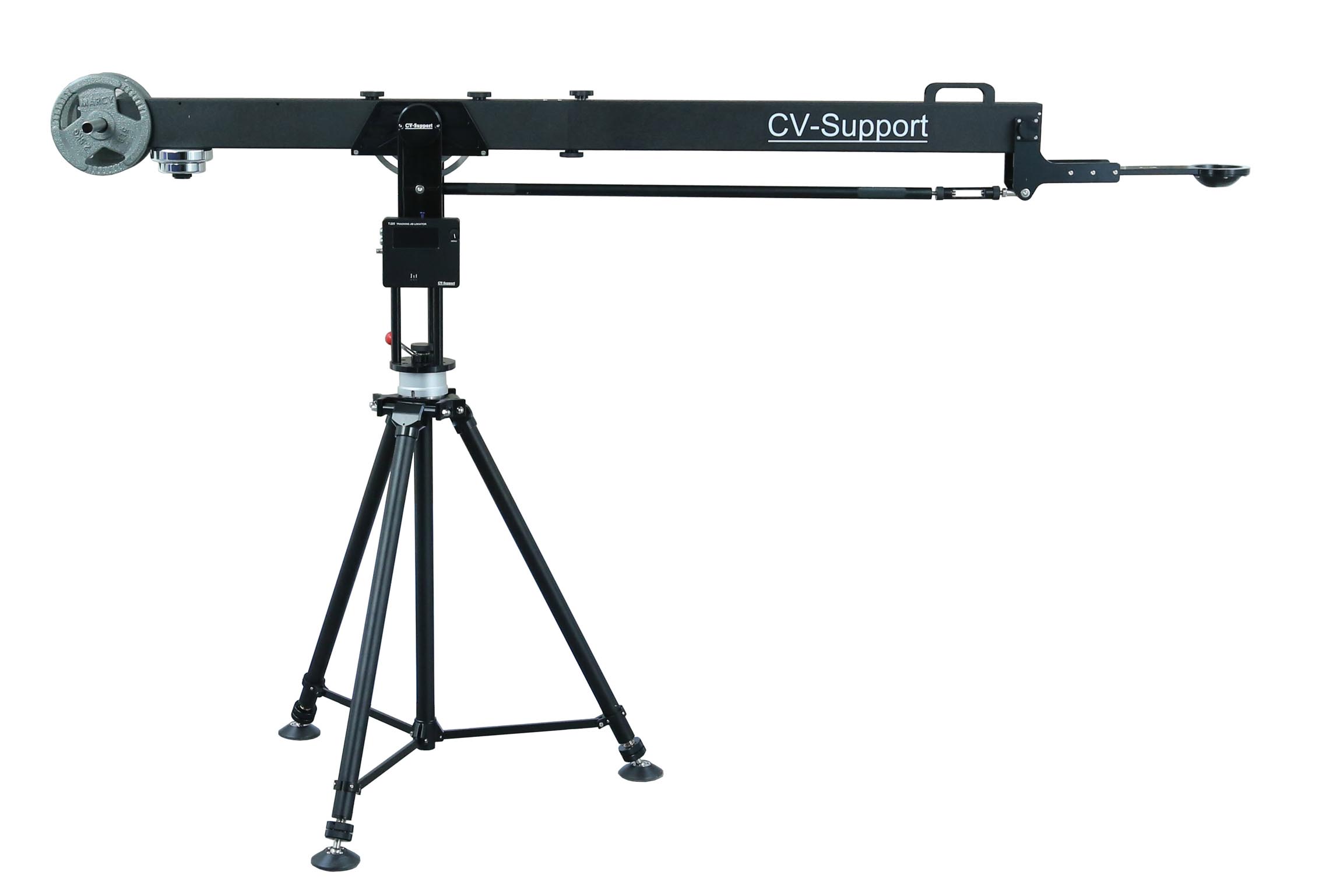
● Jib Length
2.4 m
● Pan Radius
1.64 m
● Maximum Head Center Height
2.4 m
● Minimum Head Center Height
0.45 m
● Head Mounting Interface
100 mm bowl
● Jib Load Capacity(Head + Camera)
30Kg
● Sensor Resolution
20 bits (0.0003°)
● Typical Tracking Accuracy
±2.5 cm
● Data Upload Format
FreeD
● Data Output Interface
LAN interface (UDP mode)
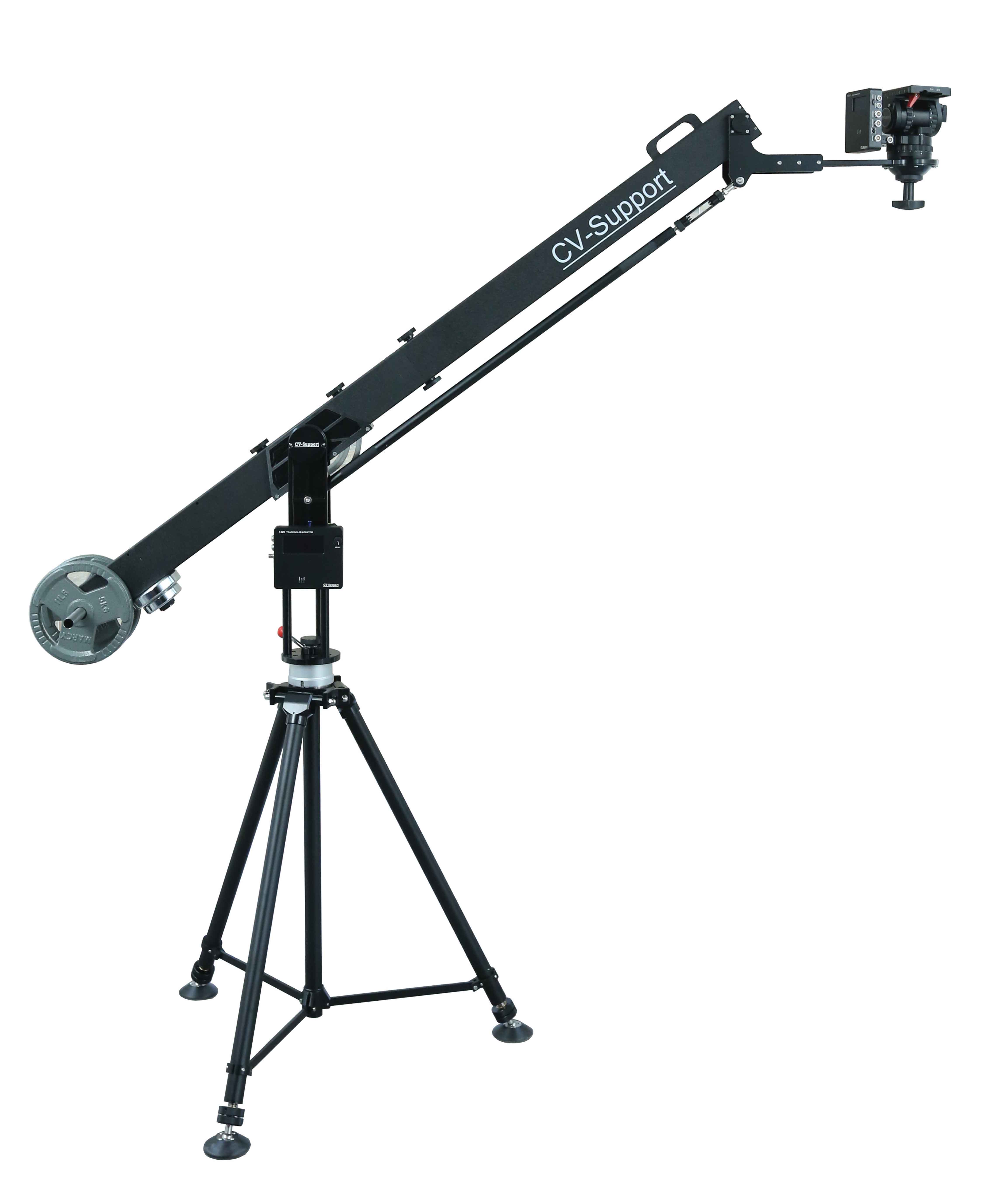
The TJ20 virtual tracking jib is a manually operated jib system that, when combined with the CD15 or CD20 virtual tracking head, provides users with a movable camera position within a certain range. The jib system is equipped with high-precision absolute angle sensors on the jib’s pan and tilt axes. The system’s positioning unit collects data from these two sensors and the head’s angle data, combining it with structural information such as the jib length to calculate the real-time position and angle of the camera within the on-site coordinate system. The results are then uploaded to the server. Combined with the high-performance CD15A/20A tracking head, the system can provide the precise position of the lens’s field-of-view apex.
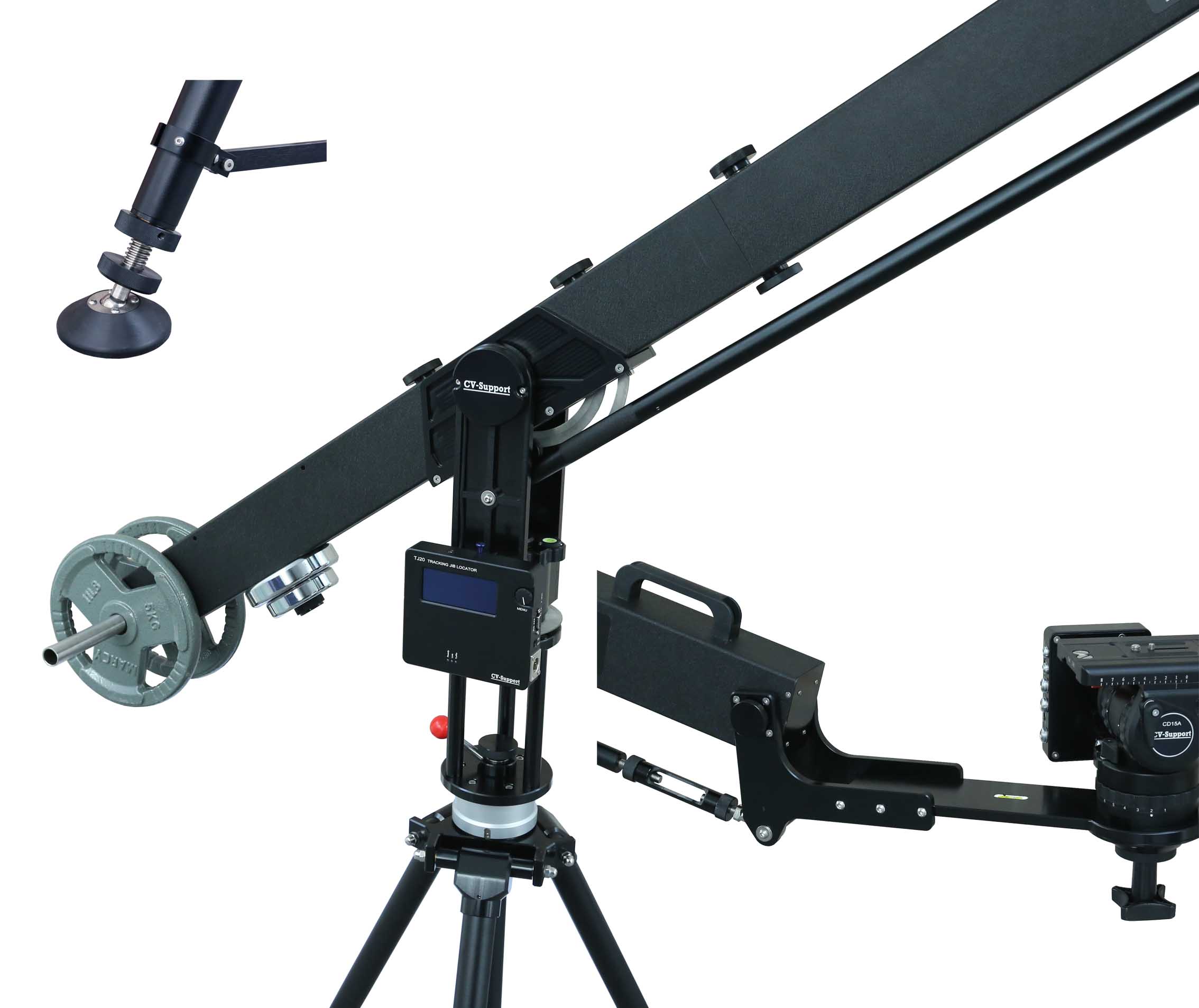
The tracking accuracy of the jib system largely depends on the precision of the setup, making accurate leveling at each stage essential. In particular, the horizontal state of the jib’s central rotation axis is critical, as any error will be magnified according to the length of the jib arm. To address this, in addition to being equipped with a high-precision level bubble, the system features a screw adjustment mechanism at the lower end of the tripod, enabling fine adjustments even under full load conditions.
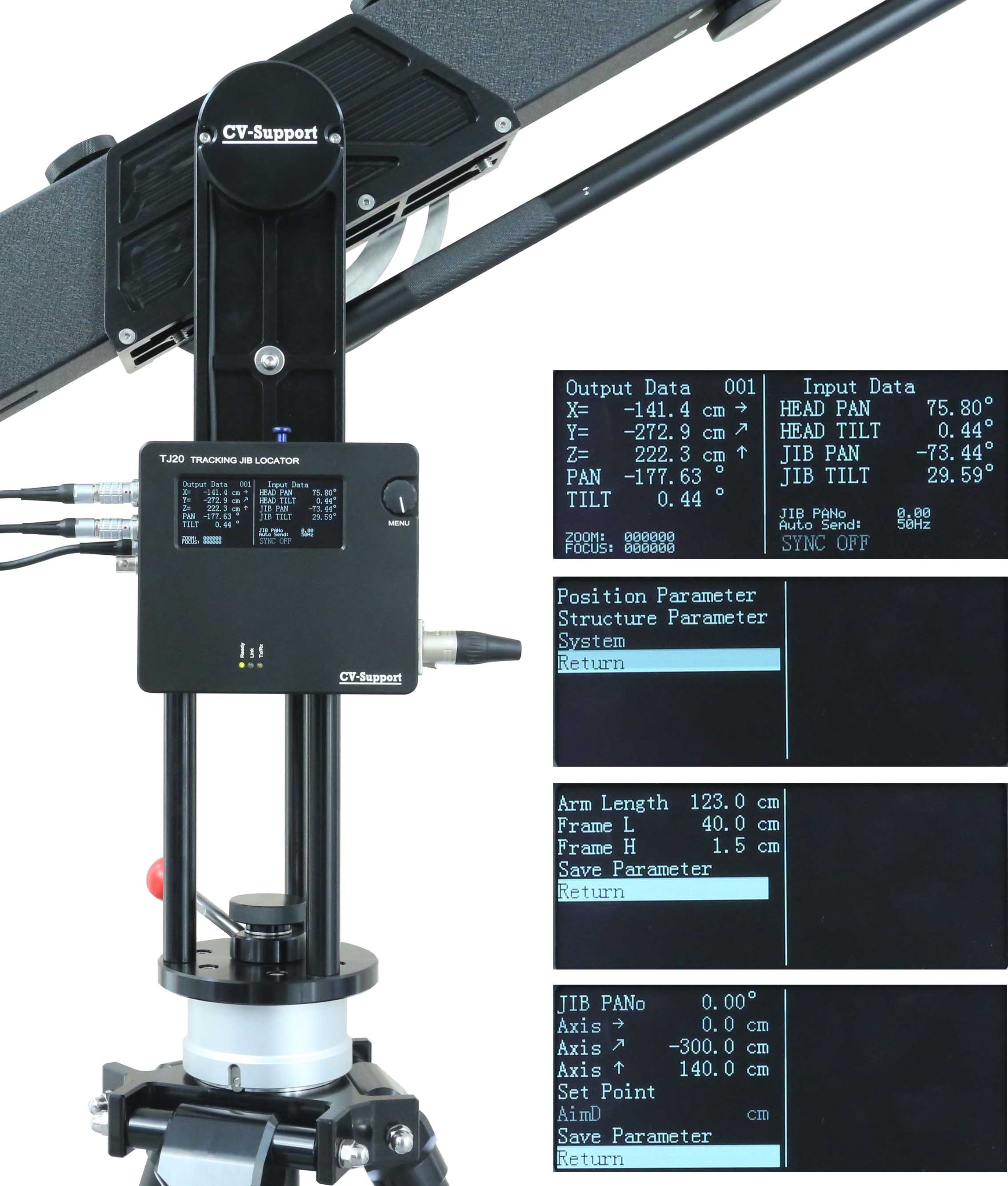
The jib system includes an intuitive operation menu that contains essential structural and positioning parameters. The positioning parameters include the jib’s position coordinates and the 0° angle position of the arm within the on-site coordinate system. The system provides a user-friendly setup process, allowing users to determine these parameters within 3 to 5 minutes. The parameters can be saved so that they are automatically retained when the system is restarted.
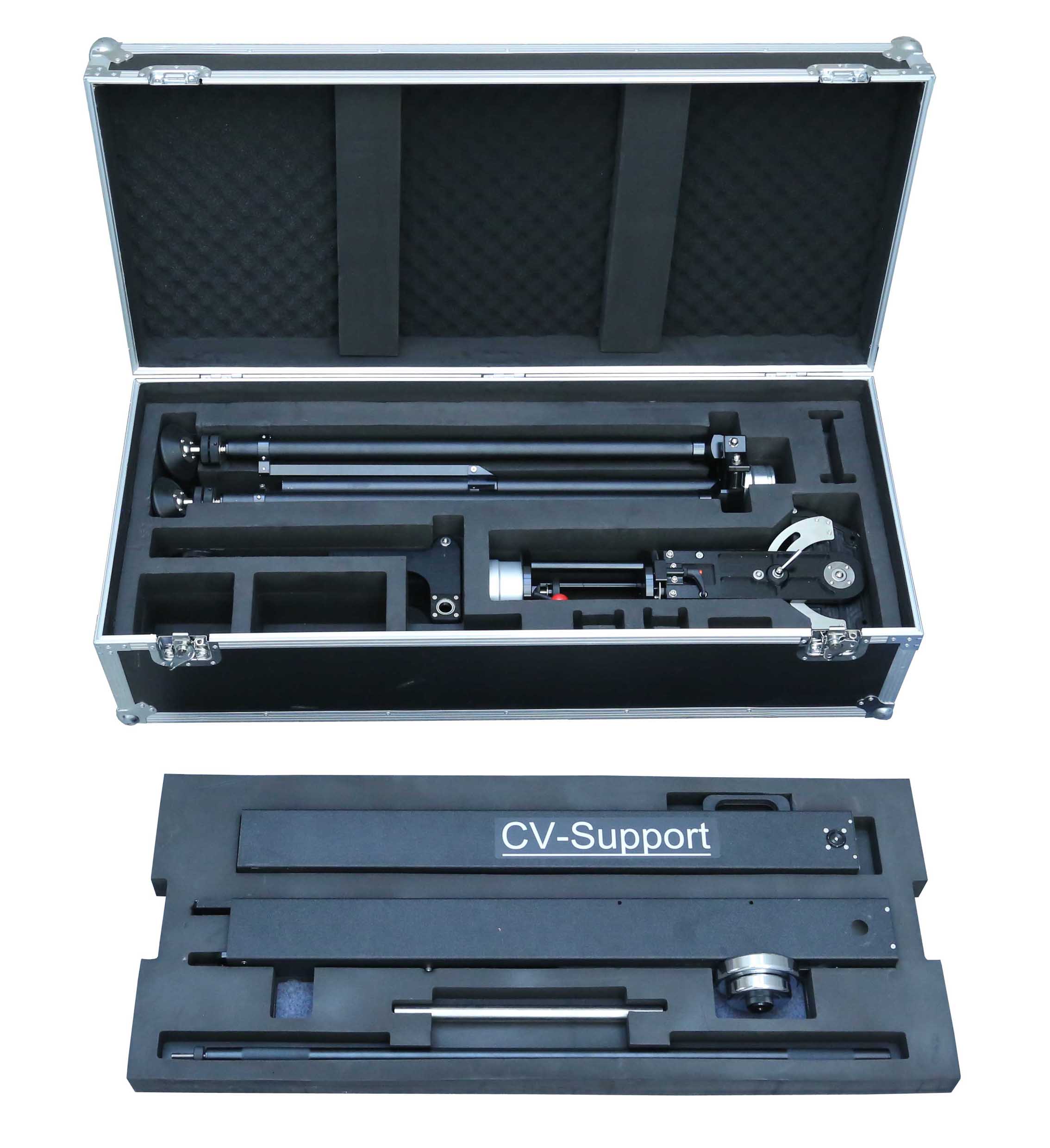
The system consists of several modular components, making it easy to set up, dismantle, transport, and store.
